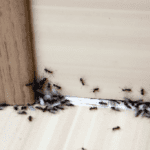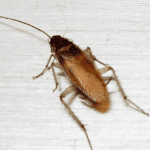What are dust mites and how to get rid of them?

What are dust mites and how to get rid of them?
What are dust mites and how to get rid of them?
If you have allergies or asthma, then this can cause you a tiny creature that lives almost everywhere in the house. It is invisible to the naked eye, but it can cause several and serious health problems. It's dust mites. Dust mites can be the most common cause of allergies and asthma throughout the year. found on every continent except Antarctica. In a warm, humid house, dust mites cannot survive year-round. Getting rid of them permanently and irreversibly is probably not possible. But there are ways you can reduce the allergic reactions they can cause.
What are dust mites? A dust mite is about a quarter to a third of a millimeter long!. They are too small to see with the naked eye. They have eight legs, so they do not belong to the insect family but to the arthropod family, like spiders. Dust mites like temperatures between 20 and 25 degrees Celsius. They also like humidity levels of 70 to 80 percent. There are at least 13 different species of mites, all very well adapted to the home environment. They mainly feed on the tiny flakes of human skin that we humans shed every day. An average adult can shed up to 1.5 grams of dead skin per day. This is enough to feed over a million dust mites! These flakes penetrate deep into the interior of furniture, carpets, pillows, quilts, mattresses, sofas, thick curtains, but also cloths and fluffy children's toys!
It is estimated that there are 5,000 to 15,000 mites per square centimeter of mattress! What is a dust mite allergy? Allergens are substances that cause allergic reactions. Both their body parts themselves and the droppings of dust mites are allergens for many people. Most dust mites die in low humidity or extreme temperatures, low or high. But this is not enough! Their dead bodies become food for new generations of mites, which continue to cause allergic reactions. What are the symptoms of dust mite allergy?
The most common symptoms of a dust mite allergy can include: Nasal congestion. Asthma. Sneezing. Allergic rhinitis. Eye redness. Itch. Skin irritation. Cough
If dust mite allergy triggers your victim, you may also experience: Difficulty breathing Chest tightness or pain Wheezing or wheezing when exhaling Trouble sleeping caused by coughing or wheezing.
How does a doctor diagnose a dust mite allergy? To diagnose if you are a victim of a dust mite allergy, you should see your doctor. He is the only one competent to diagnose the problem and prescribe treatment! The symptoms we mention above are simple indications that can only be evaluated by experts!
How can I prevent allergic reactions to dust mites? As we mentioned above, getting rid of mites is almost impossible. But you can reduce the problems they can cause. How; Reducing their numbers. There are some basic actions and changes you should make in your home to reduce the number of these invited "visitors". Studies have shown that more than anywhere else in the house, most dust mites live in the bedroom. So this is the best place to start. They protect mattresses and pillows with special cases. These covers are made of materials with very small pores, which do not allow dust mites and their waste to enter the interior. Neither will the internal moisture be expelled, resulting in other, different problems. Also, plastic or vinyl covers are less expensive, but many people find them uncomfortable. Wash sheets and pillowcases once a week in hot water. As long as the material allows them, you should wash in water that is as hot as possible. This is the only way to kill dust mites. Get rid of all types of fabrics that mites love and that you cannot replace, wash them regularly in as hot water as possible.
Treat all the rooms in your home like your bedroom. Dust mites gather wherever they find the ideal "habitat". Somewhere with moisture, dirt, dust. What are these species? Sofas, armchairs, carpets, curtains (especially thick curtains), dining room chairs, worn and unwashed items. that accumulate there is kept at controlled levels and creates no or minimal problems.
How often should duvets be washed? Duvets should be cleaned twice a year. If this is not possible, then make sure to clean them every spring. Children's comforters should be cleaned twice a year too. For maximum hygiene, try to stick to it!
Should blankets be washed every time? Blankets should be cleaned twice a year. If this is not possible, then make sure to clean them every spring. Children's blankets should be cleaned twice a year too. For maximum hygiene, try if you can't do extra washes.
Air conditioner cleaner: Which one is right for you?
Every time the mattress should be cleaned? Mattresses should be cleaned once a year, with the best time for this being spring. Quilts should be cleaned twice a year. If this is not possible, then make sure to clean them every spring. Children's quilts should be cleaned twice a year too. For maximum hygiene, try to stick to it!
DO NOT store your used items without first cleaning them! Moisture, stains, dust, smoke, pollen, dandruff, hair, body fat, etc., have penetrated inside them and provide mites, fungi, bacteria and all allergens with the ideal growth environment! If they are not cleaned in time, then, on the one hand, the items are at risk of being damaged, on the other hand, these items will become a real source of contamination in the house and in the wardrobe.
Read hundreds of articles that will answer any question about #cleansecta by clicking here.




